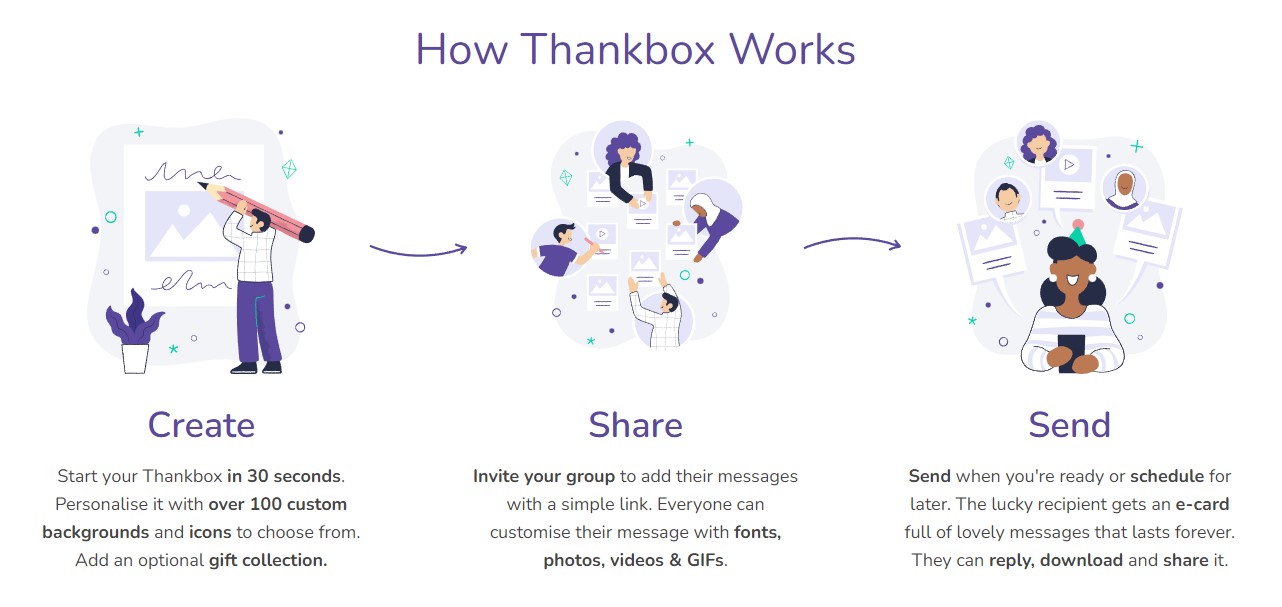Our Guide to Managing Up: What Is It & How To Get The Results You Want


Successful employees always put their best foot forward. When done the right way, managing up can be an extraordinary skill to help you make a positive splash within your organisation. It encompasses leveraging the amazing traits of a good manager so that you can bring out the best in yourself professionally.
Whether you’re navigating the challenges of remote work or trying to enhance collaboration within your team, understanding how to manage up will lead to better outcomes for your career and everyone around you.
So, join us in this Thankbox article as we explore the art of managing up. We’ll offer practical strategies and actionable examples so you can start managing up more effectively than before.
Let’s dive in!
What is managing up?
"Managing up" is the practice of managing your relationship with your supervisor or higher-ups in a way that helps both you and your manager work more fruitfully together. It’s essentially about being the most effective and understanding employee you can be–without sucking up to the boss!
To manage up, you should understand and support your manager's work expectations and goals, as well as learn their preferred working style. By cultivating awareness of what your manager’s goals are and how they operate, you can foster an ideal professional bond. The result? A more harmonious and happier work environment.
But that’s not all. You might also achieve the career advancement you desire if you manage up effectively in the long term.
How do you benefit from managing up?
If you’re strategic, managing up can make your job easier and more fulfilling. Also, it’s doubly important in environments where high performance is expected.
Here are some ways that you benefit from managing up:
Understanding priorities: Knowing what’s most important to your manager and the organisation can help you align your work and decisions with those priorities.
Effective communication: Keeping your manager informed about your progress and challenges helps them support you better and removes surprises.
Anticipating needs: Proactively addressing issues before they arise or preparing solutions to potential problems demonstrates your initiative and foresight.
Feedback and adaptation: Soliciting feedback on your performance and adapting your work style to better fit with your manager’s preferences leads to a more effective working relationship.
Part of managing up is being a force of positivity in your organisation. Sending a Thankbox is a great way to show your support to managers and other colleagues. The best part? It only takes a minute to set up your very own personalised e-card.
Supporting management success: As much as it’s about improving your own work life, managing up also includes contributing to your manager's success. This might involve making sure they look good in front of their own bosses or helping them achieve their objectives.
6 steps to manage up effectively
1. Understand your manager’s goals and priorities
You’ll need to start by understanding what is critical to your manager and your organisation's broader objectives. This involves identifying both the short-term goals and the long-term vision that guide your manager's actions.
Here are some ways you can achieve this:
Asking directly: Have open conversations with your manager about their key goals and how you can help achieve them. They’ll really appreciate you taking the initiative.
Observing and learning: Pay attention to the projects and issues your manager prioritises and spends most of their time on.
Reviewing strategic documents: If you have permission, review business plans, reports, and meeting agendas to better understand your department or organisation's strategic priorities.

2. Adapt to your manager’s work style
Once you understand your manager’s priorities, you can begin adapting to their work and leadership style. Get to know how they prefer to receive information, make decisions, and communicate. Adapting to your manager's work style can lead to more valuable interactions and better results.
To do this, you can follow these best practices:
Observe communication preferences: Does your manager prefer emails, face-to-face discussions, or brief updates? Adapt your communication style accordingly.
Understand decision-making: Know whether your manager likes to make decisions quickly based on summaries or requires detailed background information.
Match their pace: If your manager has a fast-paced style, try to deliver your work promptly and efficiently.
3. Learn to communicate effectively and proactively
Effective communication is key to managing up successfully. It’s about ensuring that your manager has all the information they need to make informed decisions and that they are aware of any potential issues before they become problematic.
Enhance your communication by:
Providing regular updates: Keep your manager informed about your progress and any obstacles you encounter. Regular updates can prevent surprises and prepare your manager to provide support if needed.
Being clear and concise: When communicating, be direct and to the point. Avoid unnecessary details that may detract from the main message.
Anticipating questions: Try to foresee what questions your manager might have and include those answers in your updates or discussions.

4. Anticipate needs and take initiative
Being proactive about what your manager might need and taking the initiative to address those needs before being asked can significantly improve your working relationship.
Here's how you can do it:
Identify patterns and needs: Pay attention to recurring challenges or tasks your manager faces and try to develop solutions or improvements proactively.
Take on responsibilities: Voluntarily take on tasks that will alleviate your manager’s workload, especially those that you can handle well.
Show foresight: Keep an eye on how decisions will play out in the future and prepare strategies that will benefit your team or department.
Part of managing up is being a force of positivity in your organisation. Sending a Thankbox is a great way to show your support to managers and other colleagues. The best part? It only takes a minute to set up your very own personalised e-card.
5. Solicit feedback regularly
Feedback is crucial for your personal development and ensuring you are meeting your manager's expectations. Managers like proactive employees who ask for feedback. Don’t overdo it, but asking questions can show your manager that you’re always on the ball.
To effectively solicit feedback, you can:
Ask specific questions: Instead of general feedback, ask specific questions about projects or your role to get actionable insights.
Create a routine: Establish a regular schedule for feedback sessions, which can be during one-on-one meetings, performance reviews, or informally.
Act on the feedback: Show that you value the feedback by acting on it and demonstrating improvement or adjustments based on it.

6. Support their success
By supporting your manager’s successes, you increase their confidence and trust in the team. Not only will this facilitate a positive work environment, but it can also further your own career.
Here are some ways to support your manager’s success:
Align your work with their objectives: Ensure that your work contributes directly to the goals and projects that are important to your manager.
Help them shine: Prepare your manager with all the necessary data and support they might need for presentations, meetings, or decisions.
Be reliable: Consistently deliver high-quality work that your manager can depend on without needing to double-check.
Also, when your manager hits a major milestone, you shouldn’t hesitate to organise formal congratulations. The best way to do that is with a Thankbox e-card.

Creating a Thankbox is simple: choose the perfect design, add your special messages, GIFs, photos, and videos, and invite the rest of the office to contribute to this sentimental gesture.
In our experience, managers appreciate these little thank-yous. It’s a great way to show them that you care.

But don’t just stop there. Show genuine interest in their wellbeing and life achievements by acknowledging their birthdays, and anniversaries, or sending get-well-soon e-cards. The best part about Thankbolx is that we can elevate your appreciation with digital gift cards (from over 700 global retailers) and flower deliveries!
Wrapping up
We just gave you a huge list of advice to help you manage up in the best way. So, what are you waiting for? Go out there and start adding value around the office today!
Plus, if you want to cultivate more meaningful relationships with managers and other colleagues, sending a Thankbox to celebrate important milestones is a great first step.
Create a Thankbox and start spreading the joy around the office!
Images: Cover | Women sitting by a window | Desk set-up | Man and a woman in turquoise suits | Celebrating a birthday in the office





